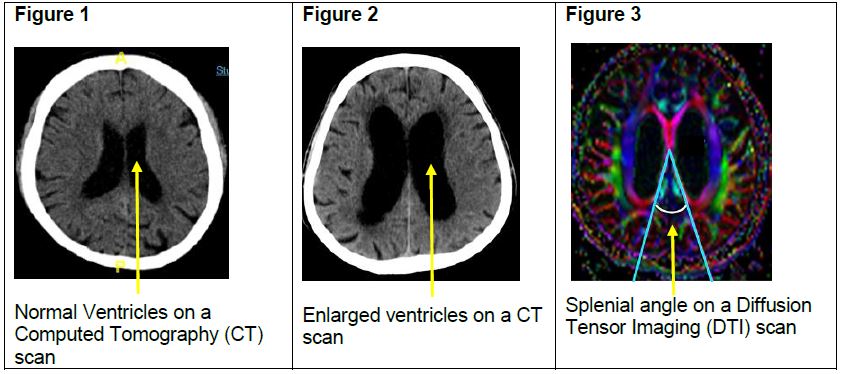PRESS RELEASE
New imaging method to diagnose disabling brain condition offers hope of improved patient outcomes
• Idiopathic Normal Pressure Hydrocephalus (iNPH) is a condition that affects the elderly, where excess cerebrospinal fluid accumulates in the central fluid cavities of the brain known as ventricles.
• This condition is important to diagnose as some of its memory, gait and urinary manifestations are potentially reversible in patients treated early by draining the excess fluid.
• Narrowing of the space between the enlarged ventricles in each half of the brain in iNPH helps doctors differentiate big ventricles arising from brain atrophy secondary to neurodegeneration, which often mimic iNPH in presentation.
• SGH and NNI researchers have developed a new, non-invasive neuroimaging method to better diagnose iNPH, which could facilitate early intervention and treatment.
Singapore, 6 April 2022 – A team of researchers from the Singapore General Hospital (SGH) and the National Neuroscience Institute (NNI) have developed a new method to diagnose and assess Idiopathic Normal Pressure Hydrocephalus (iNPH), a neurological condition which results in excess cerebrospinal fluid (CSF) accumulating in the brain’s ventricles.
The ventricles are fluid-filled cavities located deep within the brain, which appear as a central butterfly-shaped like structure on brain scans (Figure 1). Excess CSF in these fluid-filled cavities causes the ventricles to enlarge, and the butterfly wings to balloon (Figure 2). This causes the nerve fiber tracts that run alongside the dilated ventricles to stretch, resulting in symptoms such as cognitive decline, walking difficulties and urinary incontinence, among other symptoms. However, some of the mental and gait symptoms overlap with those seen in the more common Parkinson’s disease and Alzheimer’s disease, which can delay diagnosis.
“The correct diagnosis of iNPH is essential to ensuring appropriate management for this condition. In some cases, iNPH can be controlled or reversed with the insertion of a shunt to drain excess CSF from the brain,” said Dr Nicole Keong, Senior Consultant, Department of Neurosurgery, NNI and research co-lead. “However, other conditions may mimic iNPH. In addition, the treatment for iNPH involves surgery, which carries the risk of complications such as infection or bleeding in the brain, so determining which patients would most benefit from shunt insertion is an important part of the supplementary testing needed to avoid unnecessary risks to patients. Brain imaging is one of the most critical tools we rely on to address this need.”
Conventionally, brain imaging methods to diagnose iNPH are often imprecise and result in a lot of variability.
Researchers from SGH and NNI have developed a new method to measure the ventricular dilatation in iNPH by focusing on the narrowed space at the back (also known as splenial) end of the ventricles, and measuring it on the horizontal plane (Figure 3). This is termed the splenial angle, which they found to be narrower in iNPH patients than patients with Alzheimer’s and Parkinson’s disease, or healthy elderly.
“Brain images are most commonly acquired in the horizontal plane as the patient lies flat on the scanner table. Leveraging this, we developed a neuroimaging method to measure the narrowed space between the dilated ventricles which leads to a more reproducible and reliable method for diagnosis of iNPH, and differentiating from other neurodegenerative conditions,” said Associate Professor Chan Ling Ling, Senior Consultant, Department of Diagnostic Radiology, SGH and research lead. She is also an Associate Professor in the Radiological Sciences, Academic Clinical Programme and Neuroscience & Behavioural Disorders, Signature Research Programme, Duke-NUS Medical School.
The researchers found the splenial angle to be better than current existing radiological methods of detecting and assessing iNPH, with superior accuracy in differentiating iNPH from Alzheimer’s disease and Parkinson’s disease. This could improve screening for iNPH on neuroimaging, and potentially impact patient outcomes.

Reference: Ling Ling Chan, Robert Chen, Huihua Li, et al. The splenial angle: a novel radiological index for idiopathic normal pressure hydrocephalus. European Radiology. 2021 Dec;31(12):9086-9097. doi: 10.1007/s00330-021-07871-4.
For media enquiries, please contact:

|[{"FileName":"Press Release New way to diagnose disabling brain condition (1).pdf","AttachmentUrl":"/sites/shcommonassets/Documents/News/new-imaging-method-to-diagnose-disabling-brain-condition-offers-hope-of-improved-patient-outcomes/Press Release New way to diagnose disabling brain condition (1).pdf"}]||
Tags:
;
;
;
;
Press Release;
;
Singapore General Hospital;National Neuroscience Institute;
Article;
;
;
;
Neurosurgery;Diagnostic Radiology;
;
Patient Care
